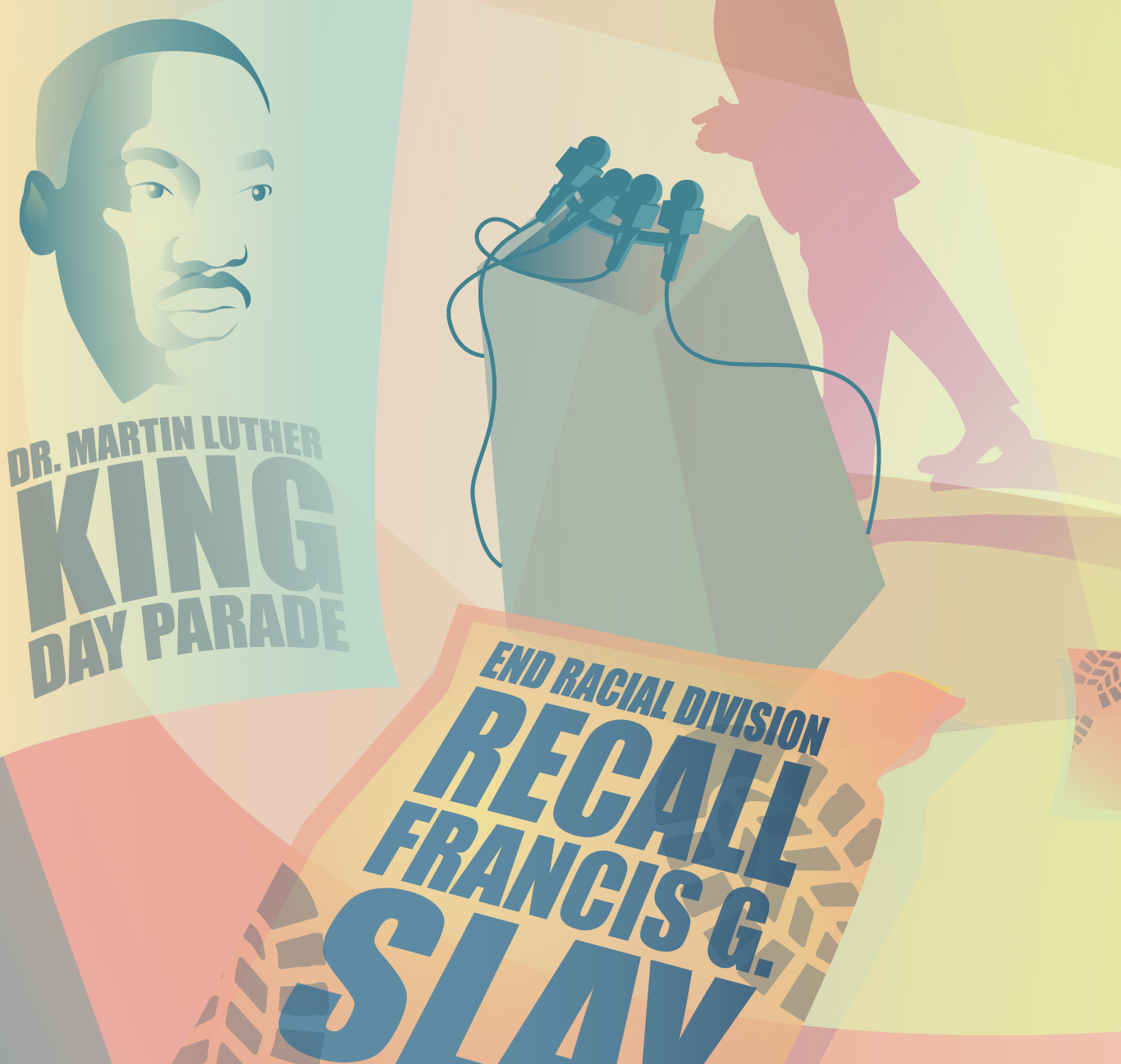Even though he didn’t have direct control of the St. Louis public school system, Francis Slay played a central role in shaping education in the city throughout his 16 year tenure as mayor.
At the turn of century, the mayors of cities like Cleveland and Chicago gained direct control of urban school districts. But Mayor Slay opted instead to use his influence in less direct ways.
A tumultuous beginning
After deciding St. Louis Public Schools needed a new direction, Slay partnered with a civic group called the Black Leadership Roundtable to find school board candidates who would support their agenda. In 2003, the district had four open seats on the seven-member board, presenting a chance to gain majority control of the district.
On April 8, 2003, all four members of the mayor’s slate of candidates won the election, creating the majority voting bloc Slay and his partners wanted.
Less than two months after taking power, the new school board hired an outside firm to run the district. The idea was to get the district’s finances in order — an audit conducted by the firm found the district was teetering on the verge of bankruptcy. But the firm’s drastic tactics sparked a public backlash and launched a period of rapid superintendent turnover and high profile in-fighting among board members.
By the end of 2006, Mayor Slay had decided governing St. Louis Public Schools through an elected school board wasn’t working. He said the “governance model had failed the kids for far too long” and asked the state of Missouri to take over in the middle of the school year.
In response, students staged a sit-in at the mayor’s office. They were worried about their college prospects and wanted the mayor to withdraw his request. In order for the state to take over the district, the state board of education had to first withdraw accreditation from St. Louis Public Schools.
The sit-in continued for several days before Slay agreed to talk to the student protesters. Aldermen Antonio French, a longtime political opponent and critic of the mayor, filmed the meeting.
Antonio French | PubDef
Slay’s educational legacy
After the state took over the city school district in June 2007, the mayor doubled-down on what arguably became his strongest educational legacy: his support for charter schools.
He contended that because charter schools operated independently from the district, they were a quick way to bring “quality” education options to St. Louis. Because charter schools receive public funding, they are tuition-free just like traditional school districts.
He and his then-education liaison, Robbyn Wahby, began recruiting charter schools they believed would be good for the city and endorsing charter schools they approved.
Under his watch, the number of charter schools in St. Louis grew to 17 in the 2017-2018 school year, with a combined enrollment of more than 10,000 students.
Loading...
Supporters of charter schools say they give parents, regardless of income, educational options for their children. But opponents believe charter schools dilute support for traditional school districts.
St. Louis Public Schools advocate Susan Turk, whose son graduated from the district’s top ranked magnet school, Metro Academic and Classical High School, saw Slay’s championship of charters as an effort to keep white, middle class families in the city.
“Quality charter schools seemed to be code for charter schools that would attract middle class and white students,” Turk said. “They began to bring in more (of) what I considered to be kind of boutique charter schools, like the language immersion schools, that might be more attractive to more affluent parents.”
But for Wahby, who now heads the state’s charter school commission, keeping families in the city is a point in favor of charter schools.
“There are more people today that want and believe that you can have high performing schools in an urban district,” Wahby said. “We have proof points both in the district and in charter schools that no matter your zip code you can see high performing schools.”
St. Louis Public Schools, 10 years later
When the state of Missouri took over St. Louis Public Schools in 2007, it took control away from the locally elected school board and put in charge an appointed Special Administrative Board..
The governor, the mayor and the board of aldermen president each appointed one person to the special board.
In 2008, the SAB brought in Superintendent Kelvin Adams, who slowly began to help the district meet more of the state’s academic benchmarks.
In 2015, St. Louis Public Schools scored in the fully accredited range on the state’s Annual Performance Review, and in January 2017 the state reclassified St. Louis Public Schools as fully accredited.
The district still has an elected board, but the special board continues to make all the decisions.
Today, both charters and individual schools in the district are a mix of standout schools and low-performing schools.
SLPS and charter schools' APR scores
Loading...
A look at key education documents
Desegregation Agreement
When Slay took office in 2001, the city school district was in the midst of implementing a two-year-old desegregation settlement agreement.
Review of the St. Louis Public School District - 2004 Audit Report
An audit conducted by the corporate turnaround firm hired to run the district in 2003 found that St. Louis Public Schools had a $70-million dollar deficit. Claire McCaskill, then state auditor, conducted an independent audit to determine what led to the district’s near financial collapse.














